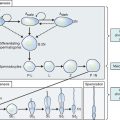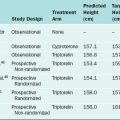Chapter 10 Ethics of Reproduction
GENERAL ETHICAL CONSTRUCTS
It is understandably difficult to balance an individual’s right to reproductive autonomy and privacy with the societal obligations to protect the potentiality of life. A recent ruling by a judge in Chicago that a couple can sue a fertility clinic for wrongful death of an embryo not cryopreserved further exacerbates this moral confusion.1
Principle-based Ethics
Justice
The principle of justice concerns fairness and equity (i.e., the need to be fair in sharing the burden [costs] and the distribution of resources [benefits] to all members of the community). In particular, the concept of distributive justice is often applied to situations requiring a decision about the equitable allocation of resources. The current practice of IVF, however, is not just. State variations in insurance coverage for IVF and the frequent determination by insurance companies that infertility is “not a disease,” make infertile low-income people unable to have access to these services. Particularly with third-party reproduction (egg donation and surrogacy), it is clear that at present, only wealthy couples can afford these reproductive services.
MOTHERHOOD IN ADVANCED AGE
There is no question that the phenomenon of older women seeking to become pregnant through egg donation has increased greatly in the past decade. In the United States between 1991 and 2001, the birth rate for women between ages 40 and 44 increased by 70%, and in 2003 there were 263 births reported in women between ages 50 and 54.2 Although a small number of these births occurred spontaneously, most are attributable to egg donation.3
Why do women of advanced reproductive age want to have children? Their motivations vary widely. A part of the explanation involves the fact that women are marrying later in life, often working in pursuit of their careers and consequently postponing motherhood. Of these women, some have been involved in prolonged infertility treatment with no success and have been referred to egg donation. Others are divorced and remarried and want to have children with their new husbands. In some cases the death of a child prompts a woman to attempt to have another.4 One study found an increased incidence of cosmetic surrogacy among older candidates for oocyte donation and suggested that the desire for pregnancy in this population is motivated by the “desire for youth” and the younger appearance that pregnancy provides.5
How Old Is Too Old?
The question, according to Sauer, has not been answered because the long-term consequences of pregnancy in older women are unknown. He describes the irony that older women, whose ages ordinarily would mean that they would have the poorest prognoses for pregnancy, with donor eggs now have the highest success rates in ART.6 The question of how old is too old presents an ethical dilemma for ART programs because the medical risks are disputable and guidelines for appropriate age restrictions are inadequate. Thus, programs offering oocyte donation are left to their own devices for determining age limits.
Pregnancy complications in older women (women over age 40) are well known. They include pregnancy-induced hypertension, premature rupture of the membranes, vaginal bleeding, and gestational diabetes.3 Those arguing against ART for older women say that this treatment exposes older women to physical risks wholly different from those that younger women are exposed to—risks to the cardiovascular system, for example. Older women have a greater chance of postpartum hemorrhage and are at greater risk for perinatal mortality, cesarean section, and multiple gestations.
Those in favor of this treatment argue that studies on older mothers are misleading because they include spontaneous pregnancies, women who have not been prescreened before pregnancy, women who are socioeconomically disadvantaged, and women who were in poor health before pregnancy.6,7 They contend that women over age 40 entering oocyte donation programs are typically rigorously screened before acceptance into the program. One study reported on women in their sixth decade of life who had safely delivered babies and presented no problems.6
Discipline-wide guidelines are inconsistent or entirely lacking, so programs have no generally accepted standards to provide guidance in making decisions about these patients. For example, the American Society for Reproductive Medicine (ASRM), in its Practice Guidelines, recommends that all recipients of oocyte donation over age 45 undergo thorough medical evaluation, including cardiovascular testing and a high-risk obstetrical consultation before treatment. The guidelines do not include recommendations for age restrictions, however.8 A statement from the ASRM Ethics Committee asserted that oocyte donation to postmenopausal women “should be discouraged” and that patients and programs should determine on a case-by-case basis whether a woman’s health, medical and genetic risks, and provision for child rearing justify proceeding with treatment.9
What About the Children?
Concerns about the children of older mothers seem to fall into two categories: one is about the life expectancy of the mothers and the fear that children will be orphaned at an early age; the other is about the health of the older mothers and the fear that they will not have the energy and the stamina to care for young children. The Human Fertilization and Embryology Authority (HFEA) law enacted in 1990 in the United Kingdom determined that recipients of donor oocytes should not be over age 45, based on the view that it is in the best interest of the child to be parented into young adulthood. Another clinician in the United States used the same argument—that children need an adult to raise them until they can live independently—but recommended that the treatment should be limited to women under the age of 60.10 Those arguing in favor of oocyte donation for postmenopausal women say that society is accepting of older men marrying younger women and having children, so to deny treatment to older women would be agist and sexist. In making this argument they ignore the fact that many older men are biologically capable of fathering children if they choose to do so, so that treatment issues enter into the equation only if donor sperm are required. They also argue that grandparents often take on the parenting role and “bring economic stability, parental responsibility, and maturity to the family unit,” so there is no reason to assume that older women would lack the stamina to raise children.9
TREATING SAME-SEX COUPLES
An increasingly common ethical concern in fertility treatment centers offering ART is whether or not to accept couples of the same sex as patients. Often the question applies only to gay male couples because many clinics may already routinely treat lesbian women. Yet in recent years gay men as well as lesbian women have become more open about their homosexuality, their relationships, and their determination to become parents.11,12 There has been dramatic recent growth in societal awareness about homosexuality and acceptance of same-sex civil unions. In addition, a growing body of research supports the notion that being reared in homosexual homes does not harm children and that such children are not more likely to become homosexuals themselves.12 These factors have led more ART programs to consider treating same-sex couples of both genders.
A recent survey of ART programs in the United States makes clear that there is no consistent policy regarding the issue of treating same-sex couples, although programs are more likely to reject gay males than they are lesbians.13 Neither is there consistency in ethical concerns about this treatment. Concerns range from questions about the health and well-being of children conceived in all homosexual relationships to specific concerns about the children of gay men. Some common questions about gay fathers include: Can men (and in particular, gay men) be sufficiently nurturing? Are gay men more likely to be pedophiles that abuse their children? Are the sons of gay men more likely to become gay? Others may question whether it is ethically acceptable for programs to accept lesbians for ART while refusing to treat gay males.
Why do lesbian and gay couples want to become parents? It seems that they are motivated by the same factors that motivate heterosexuals to become parents. In fact, a recent study looked at desire and motivation for parenthood in 100 two-mother lesbian families compared to 100 heterosexual families. The author found that the desire to have children was stronger in lesbian women and that they gave more thought to the idea of having children.14 Gay males give the same reasons for parenthood that heterosexual males do; that is, the desire to nurture children, to have the constancy of children in their lives, and to achieve the sense of family that children provide.15,16
The health and well-being of the children of lesbian women conceived through ART has been described in several studies. Researchers found no differences between children raised by lesbian mothers and those raised by heterosexual mothers in terms of gender identity, behavioral development, and psychological development.11,17–21 A recent study, the first based on a national sample, compared 44 adolescents in lesbian families and 44 adolescents living in heterosexual families and found no significant differences between subjects on psychosocial adjustment, school outcomes, and romantic relationships.22 Adult offspring of lesbians were studied as well. Young adults between ages 17 and 35 who had been conceived in a heterosexual relationship but raised in a lesbian household were found to have healthy peer relations, to be psychologically stable, and to be no more likely to report same-sex attraction than offspring of heterosexual mothers.23 Though an estimated 6 to 14 million children in the United States live with at least one gay or lesbian parent, children of gay men have not been as thoroughly studied as those of lesbian women.12 For example, in a recent review of 23 empirical studies of children of gay and lesbian parents published between 1978 and 2000 only three studied gay fathers.24 Parental motivation was considered in a study comparing attitudes toward parenting of heterosexual and gay fathers. Gay fathers were more likely to express “the higher status accorded to parents as compared to nonparents” as a motivation for parenting. The authors also asked subjects to describe their interaction with their children. They found no reported differences in terms of intimacy or involvement with the children, although gay fathers reported greater warmth and responsiveness and more limit setting.15,16
Three studies examined the sexual preferences of adolescent and adult offspring of gay fathers and found that most reported a heterosexual orientation.25–27 Studies of gender identity, gender role behavior, and sexual orientation found no differences between children of gay men and children of heterosexual fathers. Children of gay fathers are not more likely to become homosexual nor are they more likely to be sexually molested by their fathers.28,29 Gay men who choose to become fathers within a gay relationship most commonly do so via adoption. However, the number of gay men who want to become fathers through ART is growing. Some become fathers through a coparenting arrangement with a lesbian whom they have artificially inseminated; others seek infertility treatment with a surrogate and egg donor.12 It appears that same-sex couples, including gay male couples, are increasingly determined to become parents and many are seeking infertility programs to assist them. Programs need to develop appropriate policies if they are to serve these couples with a focus on the specific needs and concerns they bring to the treatment. There is also a need for continuing studies of treatment outcome for gay couples to help improve the quality of care.
DISCLOSURE VERSUS NONDISCLOSURE WHEN USING DONOR GAMETES
Failure to disclose the origin of the gametes among couples who have conceived a child through the use of donor gametes (whether eggs or sperm) is relatively common.30 Recently, however, many—particularly in European countries—are advocating that couples resorting to donor gametes for reproduction should be obliged to disclose the use of donor gametes to their children once they reach the age of understanding, following policies analogous to those governing disclosure to children that are adopted.31
However, mandating disclosure by a couple is problematic on a number of fronts, and the claim that the practice of gamete donation is similar to adoption is incorrect for many reasons. With gamete donation, one of the parents is the biological parent and the other is the social parent; with adoption, both parents are social parents. With gamete donation the child’s mother, whether biological or not, carries the pregnancy with all of the accompanying psychological interplay. In the case of a donor egg, to ask such a mother (and she is a mother under any definition of motherhood) to tell the child that technically she is not the mother because she is not totally genetically related would strain reasonable medical practice and certainly challenge the bond between mother and child.32
Certainly a preeminent concern is the welfare of the child. However, the benefits accruing to a child from disclosure are difficult to assess and still remain open to many interpretations. In debates about child welfare with adoptions, researchers and policy makers have not yet provided a consensus on what is the best interest of the child.33,34
Donor Privacy
In addition to considerations of child welfare, one must address the impact on the other participants in the process, including the donor, the couple, and the healthcare providers. A donor has to be willing to donate his sperm or her eggs knowing that later he or she can be identified; the couple has to agree in revealing the origin of the gametes to their offspring; the providers have to restrict reproductive services only to couples who agree in writing to disclosure. Without uniform requirements for the collection and maintenance of records, the usefulness of revealing the information is questionable. Accessing any such records from private clinics and banks is likely to be difficult, and certainly the quality of the information contained in them is uneven. In addition, where the child is not in physical harm, courts and legislatures are generally reluctant to intervene in family relationships, including questioning parental judgment about the best interests of the child.32
To force fertility specialists to participate in implementing forced disclosure is problematic as well. Including acquiescence to disclosure as part of screening criteria unjustly interjects social factors (vis-à-vis health factors) into criteria for program acceptance and encourages desperate couples to lie if they disagree. Because relationships vary greatly with background, ethnic origin, and attitudes of both the male and female partner, it would not be unreasonable for a healthcare provider to raise the issue of informing offspring of his/her genetic background at the time the use of donor gametes is considered by a couple. To do more than raise the issue and present known data on the potential psychological ramifications of disclosure and nondisclosure would violate the privacy of the couple’s relationship and interfere with their authority to decide. Programs that use donor gametes should, however, prepare policies on how to handle requests of information from children of donor gametes in future. They may choose to disclose only nonidentifying information when the requesting party has reached age 18, or they may disclose more based on the particular willingness of donors to remove more of their information from anonymity.35
PRE-IMPLANTATION GENETIC DIAGNOSIS
Today there are a number of genetic tests available to detect single-gene and chromosomal disorders. Furthermore, new research tools are being implemented to aid in the discovery of how multiple genes interact in the etiology of multifactorial diseases. PGD allows screening of embryos produced in vitro for the disease of interest and the transfer of unaffected embryos. Some see this practice as reopening the issue of “eugenics” and opening the possibility of attempts to improve or manipulate the human gene pool, contending that this practice may convey negative messages about the social acceptability of genetic disorders and/or disability.36 Others argue that, on the contrary, PGD is providing information and allowing couples to make choices about the tests they have done (i.e., it is not an imposition from the state to the people) and reflecting the rights of individuals to choose what is best for them and their families.
The ethical ramifications of PGD are essentially related to the issue of requesting PGD for nonmedical indications, such as family balancing (also known as gender selection or preconception sex selection) and HLA-matching (also known as designer babies). Simply stated, is it permissible to sex embryos? And if not, what are the moral justifications to deny it? Is it morally justified to create embryos and then transfer only the ones HLA-matched with an existing sibling, so to design a perfect tissue donor?
Currently, only a minority of couples seem to give importance to the sex of their children, and even fewer seem to be willing to use the service of preconception sex selection for nonmedical reasons.37
FERTILITY PRESERVATION: ETHICAL CONSIDERATIONS FOR ADULTS AND CHILDREN
Adults
From an ethical standpoint, the key reason for pursuing fertility protection is to restore personal autonomy to those who are unable to conceive.38 However, because many of the technologies are innovative but experimental, it is difficult to design clinical trials: how to provide proper informed consent and respect for autonomy? Who to include or exclude in the trials? How to assess the risks? Can the moral principle of beneficence be upheld if ovarian tissue or testicular tissue cryopreservation poses future risks to any children who might result from this technique? Ideally the decision about who is a candidate for fertility preservation should be rendered by a team including a medical oncologist, reproductive endocrinologist, pathologist, and psychologist, all guided by written protocols that can be shared with patients.38 Patients should not be provided with false hopes, and alternative plans such as no intervention should also be part of the discussion. It is reasonable in the absence of grant funds to seek reimbursement from patients to cover the expenses of the research, but there should be no charge for clinical fees. Finally, for the time being, fertility preservation involving ovarian and testicular harvesting for freezing should be performed only in a few specialized centers working with proper International Review Board-approved consents.
Children
Impaired future fertility is a remote consequence of exposure to cancer therapies that is difficult for children to conceptualize but potentially traumatic to them as adults. Unfortunately, the modalities that are available to children to preserve their fertility are limited by their sexual immaturity and are essentially experimental. For boys who cannot produce mature sperm, harvesting and cryopreservation of testicular stem cells with the hope of future autologous transplantation or in vitro maturation represents a promising method of fertility preservation. For girls, isolation and cryopreservation of ovarian cortical strips/primordial follicles followed by in vitro maturation of gametes when fertility is desired is a possible option. Extensive research is still required to refine these modalities in order to safely offer them to patients.38
Assisted reproductive technologies must be scrutinized on the basis of efficacy and subjected to rigorous ethical deliberation before they can be offered to patients. The modalities involved in fertility preservation of young children are no exception to this rule. In addition to ensuring that the basis for offering the intervention is morally just, the execution of the intervention must be deemed ethically sound. This determination requires that the intervention in question be evaluated within an ethical framework that considers it in terms of beneficence, respect for persons (autonomy), and justice.39 It can be argued that fertility preservation aimed at children is ethical because it prevents morbidity (reproductive and psychosocial) and safeguards their reproductive autonomy.40 Therefore, the main ethical question concerns the process involved in achieving fertility preservation and the techniques required. The answer is found in an exploration of the potential risks of the intervention to the patient and his/her progeny, the special situation of children as research subjects and patients, and the potential abuse of the technologies in the future.40,41
Children represent a unique and vulnerable population with respect to medical research. They have diminished autonomy, diminished capacity to understand the risks and benefits of research objectives, and lack the ability to provide consent for research studies. As a result, they require special protection against potential violation of their rights that may occur during research investigations.39,42 Until very recently, institutional attitudes impeded significant participation by children in medical research for fear of such exploitation.39 This attitude was attributed to several historical episodes of the unethical targeting of children as medical research subjects.
One of the most notorious episodes was the Willowbrook Hepatitis Study, an examination of the natural course of infectious hepatitis and of the use of gamma globulin for its treatment and prevention. All children studied were patients at the Willowbrook State School—a New York State inpatient psychiatric facility. Enrollment into the study began in 1956. The subjects were deliberately infected with hepatitis by injection of purified viral preparations or by ingestion of stool extracts from infected persons. At one point during the study, admission to the hospital was contingent on permission to enroll a child in the study.42
The immediate risks associated with gamete isolation to the individual child may be slightly greater than minimal. However, in the context of his or her illness this might be tolerable, especially if the procedure to procure the gonadal tissue is combined with a therapeutic procedure that requires anesthesia.43 Additional risks associated with fertility preservation are more difficult to assess due to the lack of data available to quantify them. For instance, the risk of reintroduction of malignant cells to the patient when gonadal tissue is autografted cannot be estimated becausee only limited animal data exist. Moreover, the risk to offspring conceived through such technologies, such as inheritance of genetic predisposition to cancer or other unforeseen genetic risks are unknown presently.40 Patients and their families must be informed of the potential benefits and the treatment alternatives for the process to be considered ethical. With respect to childhood fertility preservation, proper attainment of informed consent from a legally authorized representative (i.e., parent or guardian) and of childhood assent must be ensured.39,42 Assent—the active affirmation by the research subject—can be obtained from incompetent minors and it should be obtained from children whenever possible.
The benefits of gamete cryopreservation are promising, but they are largely unquantifiable because human data on the survival of gametes after the freeze-thaw-transplant process is limited. Until more data become available, we cannot tell patients what percentage of gametes will survive and what the probability of conception is and must not provide them with false hope. Alternatives to gamete cryopreservation should be discussed, and patients should be given the option of no intervention.40 Barriers to the consent process for fertility preservation interventions may develop. Parents may be competent to consent for their children, but the scenario is very complex both clinically and emotionally. Therapeutic obligations may limit the amount of time allotted to families to consent in a truly informed and voluntary way. It has been suggested that to overcome some of the practical obstacles involved in the consent process, it should be performed in stages.44
ETHICS OF EMBRYO RESEARCH FOR STEM CELL EXRACTION
The subject of research on embryos created through IVF presents a variety of ethical and legal issues. The central part of the debate is the moral status of the embryo.45 This debate is not unique to the 21st century scientist or bioethics scholar; in fact it can be traced to Aristotle, who wrote of the “ensoulment” of the human at a particular stage, as did the pre-Socratic philosopher Heraclites before him. Religious views of conception have been extensively debated in Judeo-Christian and Muslim scholarship dating to the earliest religious texts in those traditions. The contemporary question of the moral status of the embryo emerged during the U.S. controversy over the legality of abortion in the 1960s through the 1980s, and continues to be a central issue in the discussion of embryo research as grounding for stem cell research. Views on the moral status of the human embryo normally take one of the following three forms:
The position that an embryo has no moral status can be argued in several different manners. Because the fetus fully depends on the pregnant woman for development, many ethicists believe that it cannot be viewed as a unique entity. The moral concerns expressed by those who hold this position about embryo research are focused on the long-term social implications of embryo research for the status of born persons, particularly those with disabilities. However, it is not held that the destruction of an embryo is inherently morally problematic.
Whatever its religious or scientific underpinnings, the ethical debate surrounding human stem cells has recently centered on how the human stem cells are derived and on whether or not they should be protected from destruction, much like an adult is.45 Using leftover IVF embryos for the purposes of human stem cell research raises complex questions about the status of the embryo, the value of human life, and whether limits should be set regarding the interventions into human cells and tissues. Furthermore, questions about adequate informed consent, oversight, and regulation also come prominently into play.
One attempt to resolve the debate over stem cell research involved the suggestion that researchers might obtain stem cells from embryos without actually engaging in the destruction of those embryos.46 It also was suggested that totipotent cells might be removed from 4- or 8-cell preimplantation embryos destined for PGD.47
Implications for ART Clinics
The processes whereby embryos are created (whether from donor eggs and/or sperm intended for research purposes or as a byproduct of reproductive healthcare), analyzed, stored, thawed, or destroyed are all processes that require the technologies, clinical expertise, patient population, and institutions of ART. It is thus no surprise that the largest research programs in the field have employed reproductive endocrinologists, biologists, ART psychologists, and social workers. Ethical issues related to participation in stem cell research include three key problems. First is the question of whether and under what circumstances patients or research subjects should be allowed to participate in the donation of reproductive materials for stem cell research, particularly where that research involves the creation of embryos for research purposes. Second is the question of whether reproductive clinicians and technologists should be involved in the nonreproductive use of cloning technologies for the creation of nuclear transfer-derived stem cells. Third is whether and when clinicians involved in the derivation of embryonic stem cells should be held responsible for the failure of those cells in clinical trials or therapies using those cells. At this time, on none of these issues is there professional consensus, although all three issues continue to receive the attention of the ethics boards of professional societies, such as the ASRM in the United States, and of bioethicists.
1 The American Fertility Association. Life in a petri dish? Available at www.theafa.org. Accessed 10 Feb. 2005.
2 Heffner LJ. Advanced maternal age—How old is too old? NEJM. 2004;351:1927-1929.
3 Tarlatzis BC, Zepiridis L. Perimenopausal conception. Ann NY Acad Sci. 2003;997:93-104.
4 Cohen CB, editor. New Ways of Making Babies: The Case of Egg Donation. Indianapolis: Indiana University Press, 1996.
5 Sauer MV, Paulson RJ. Demographic differences between younger and older recipients seeking egg donation. J Assist Reprod Genet. 1992;9:400-402.
6 Sauer MV. Treating women of advanced reproductive age. In: Sauer MV, editor. Principles of Oocyte and Embryo Donation. New York: Springer, 1998.
7 Sauer MV, Paulson RJ, Lobo RA. Pregnancy after age 50: Application of oocyte donation to women after natural menopause. Lancet. 1993;341:321-323.
8 American Society for Reproductive Medicine. Guidelines for oocyte donation. Fertil Steril. 2002;77(Suppl):S6-S8.
9 Ethics Committee of the American Society for Reproductive Medicine. Ethical considerations of assisted reproductive technologies. Fertil Steril. 1997;67(Suppl):25-35.
10 Mori T. Egg donation should be limited to women below 60 years of age. J Assist Reprod Genet. 1995;12:229-230.
11 Patterson CJ. Family relationships of lesbians and gay men. J Marriage Family. 2002;62:1052-1069.
12 Johnson SM, O’Connor E. The Gay Baby Boom: The Psychology of Gay Parenthood. New York: New York University Press, 2002.
13 Gurmankin AD, Caplan AL, Braverman AM. Screening practices and beliefs of assisted reproductive technology programs. Fertil Steril. 2005;83:61-67.
14 Bos HMW, Van Balen F, Van den Boom DC. Planned lesbian families: Their desire and motivation for children. Hum Reprod. 2003;18:2216-2224.
15 Bigner JJ, Jacobsen RB. Parenting behaviors of homosexual and heterosexual fathers. J Homosex. 1989;18:163-172.
16 Bigner JJ. Raising our sons: Gay men as fathers. J Gay Lesbian Soc Serv. 1999;10:61-68.
17 Braeways A, Ponjaert I, Van Hall E, Golombok S. Donor insemination: Child and family development in lesbian-mother families with children of 4 to 8 years old. Hum Reprod. 1997;12:1349-1359.
18 Golombok S, Tasker F, Murray C. Children raised in fatherless families from infancy: Family relationships and the socioemotional development of children of lesbian and single heterosexual mothers. J Child Psychol Psychiat. 1997;38:783-791.
19 Chan R, Raboy B, Patterson CJ. Psychosocial adjustment among children conceived via donor insemination by lesbian and heterosexual mothers. Child Dev. 1998;69:443-457.
20 Golombok S, Perry B, Burston A, et al. Children with lesbian parents: A community study. Dev Psych. 2003;39:20-33.
21 Flaks D, Ficher L, Mastepasqua F, Joseph G. Lesbians choosing motherhood: A comparative study of lesbian and heterosexual parents and their children. Dev Psych. 1995;31:105-114.
22 Wainwright JL, Russell ST, Patterson CJ. Psychosocial adjustment, school outcomes, and romantic relationships of adolescents with same-sex parents. Child Dev. 2004;75:1886-1898.
23 Tasker FL, Golombok S. Growing Up In A Lesbian Family: Effects on Child Development. New York: Guilford, 1997.
24 Anderssen N, Amlie C, Ytteroy EA. Outcomes of children with lesbian or gay parents: A review of studies from 1978 to 2000. Scand J Psychol. 2002;43:335-351.
25 Bozett FW. Gay fathers: How and why they disclose their homosexuality to their children. Fam Relat. 1980;29:173-179.
26 Bailey JM, Bobrow D, Wolfe M, Mikach S. Sexual orientation of adult sons of gay fathers. Dev Psychol. 1995;31:124-129.
27 Miller B. Gay fathers and their children. Fam Coord. 1979;28:544-552.
28 Mallon GP. Gay Men Choosing Parenthood. New York: Columbia University Press, 2004.
29 Jenny C, Roessler TA, Poyer KL. Are children at risk for sexual abuse by homosexuals? Pediatrics. 1994;94:41-44.
30 Klock S, Jacob M, Maier D. A prospective study of donor insemination of recipients: Secrecy, privacy and disclosure. Fertil Steril. 1994;62:477-484.
31 McGee G, Vaughan Brakman S, Gurmankin A. Disclosure to children conceived with donor gametes is not optional. Hum Reprod. 2001;16:2033-2035.
32 Patrizio P, Mastroianni A, Mastroianni L. Disclosure to children conceived with donor gametes should be optional. Hum Reprod. 2001;16:2036-2038.
33 Fernandez E. Significant Harm. Aldershot Brookfield, UK: Avebury Press, 1996.
34 Blyth E, Cameron C. The welfare of the child: An emerging issue in the regulation of assisted conception. Hum Reprod. 1998;13:2339-2342.
35 Ethics Committee of the American Society for Reproductive Medicine. Informing offspring of their conception by gamete donation. Fertil Steril. 2004;81:27-31.
36 Human Genetic Commission. Choosing the Future: Genetics and Reproductive Decision Making. London: United Kingdom Dept. of Health, July 2004.
37 Dahl E, Beutel M, Brosig B, Hinsch KD. Preconception sex selection for nonmedical reasons: A representative survey from Germany. Hum Reprod. 2003;18:2231-2234.
38 Patrizio P, Butt S, Caplan A. Ovarian tissue preservation and future fertility: Emerging technologies and ethical considerations. JNCI. 2005;34:107-110.
39 Hirtz DG, Fitzsimmons LG. Regulatory and ethical issues in the conduct of clinical research involving children. Curr Opin Pediatr. 2002;14:669-675.
40 Grundy R, Larcher V, Gosden RG, et al. Fertility preservation for children treated for cancer: Ethics of consent for gamete storage and experimentation. Arch Dis Child. 2001;84:360-362.
41 Thompson A, Critchley H, Kelnar C, Wallace WHB. Late reproductive sequelae following treatment of childhood cancer and options for fertility preservation. Best Practice Res Clin Endocrinol Metab. 2002;16:311-334.
42 Burns J. Research in children. Crit Care Med. 2003;31(Suppl):S131-S136.
43 Grundy R, Larcher V, Gosden RG, et al. Fertility preservation for children treated for cancer: Scientific advances and research dilemmas. Arch Dis Child. 2001;84:355-359.
44 Bahadur G. Ethics of testicular stem cells medicine. Hum Reprod. 2004;19:2702-2710.
45 McGee G, Patrizio P, Kuhn V, Kraft-Robertson C. The ethics of stem cell therapy. In: Patrizio P, Guelman V, Tucker M, editors. A Color Atlas for Human Assisted Reproduction, Laboratory and Clinical Insights. Philadelphia: Lippincott Williams & Wilkins; 2003:297-309.
46 McDonald JW, Liu XZ, Qu Y, et al. Transplanted embryonic stem cells survive, differentiate, and promote recovery in injured rat spinal cord. Nature Med. 1999;5:1410-1412.
47 National Bioethics Advisory Commission. Ethical issues in human stem cell research 1999.







